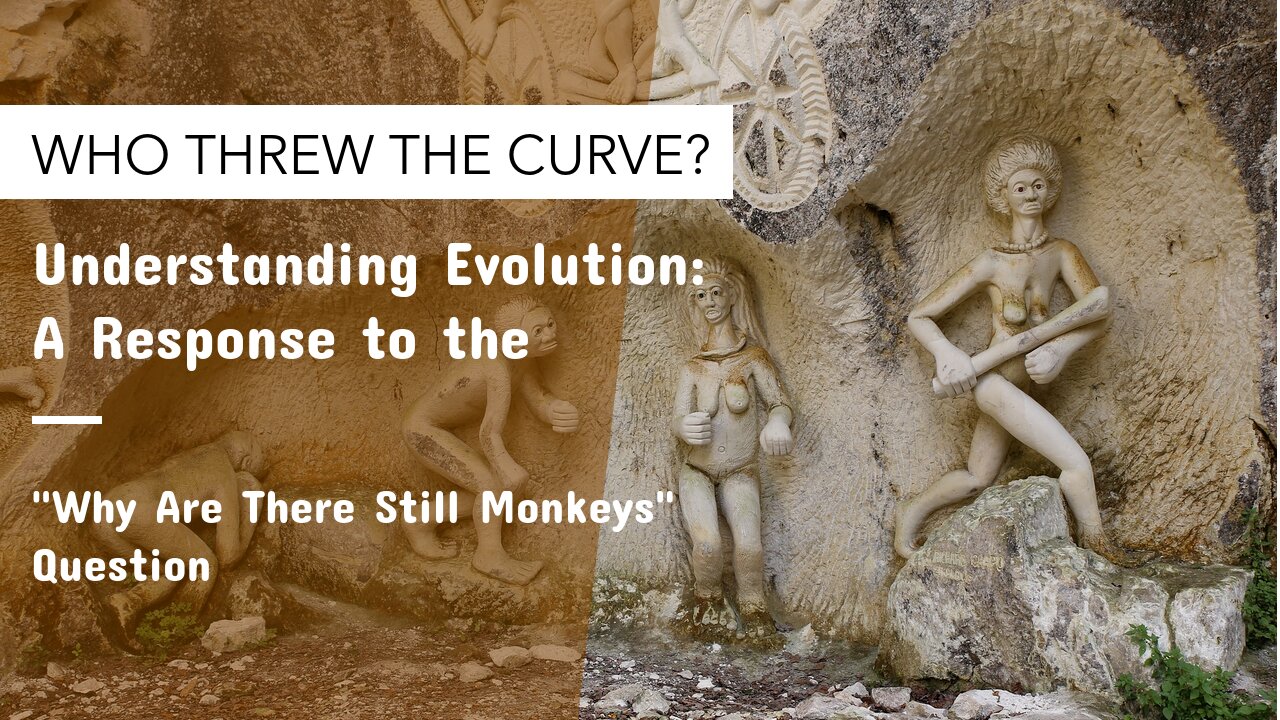Premium Only Content

Understanding Evolution: A Response to the "Why Are There Still Monkeys" Question #foryou #trending
Understanding Evolution: A Response to the "Why Are There Still Monkeys" Question
The theory of evolution is a foundational concept in biology that explains how species change over time through the process of natural selection. However, a common misconception that often arises is the question, "If evolution is real, why are there still monkeys around?" This question stems from a misunderstanding of the principles of evolution and the relationship between different species. In this essay, we will delve into the fundamental concepts of evolution, the misconception surrounding the coexistence of humans and modern primates, and why the persistence of both humans and monkeys is entirely compatible with the theory of evolution.
The Basics of Evolution:
Charles Darwin's theory of evolution by natural selection proposes that species change gradually over generations in response to changes in their environment. This change occurs due to the genetic variation present within populations. Over time, those individuals with traits that confer a reproductive advantage are more likely to survive and pass on their advantageous traits to their offspring. Gradually, these traits become more prevalent in the population, leading to a change in the overall characteristics of the species.
Misconception: "Why Are There Still Monkeys?"
The question of why monkeys still exist if humans evolved from them is based on a misunderstanding of the evolutionary process. Evolution does not suggest that one species gives rise to another in a linear or hierarchical manner. Instead, it proposes that different species share common ancestors. In the case of humans and modern primates, including monkeys, we share a common ancestor that existed millions of years ago. Over time, this common ancestor gave rise to different branches of the primate family tree, resulting in the diversity of primates we see today.
Branching Evolutionary Paths:
To illustrate this concept, consider a family tree. Just as siblings in a family share a common parent but develop into distinct individuals with unique traits, species that share a common ancestor can evolve separately in response to different environmental pressures. In the case of humans and modern monkeys, our evolutionary paths diverged from a common ancestor. While humans evolved in one direction to adapt to a changing environment, other primates evolved along their own paths, resulting in the wide range of primate species we see today, including monkeys.
Coexistence and Niche Differentiation:
The persistence of monkeys alongside humans can be attributed to the concept of niche differentiation. Different species occupy distinct ecological niches, which refer to their specific roles and interactions within their environments. Evolution shapes each species to fit a particular niche. While humans evolved to thrive in a variety of habitats through advanced cognitive abilities, tool use, and complex societies, monkeys adapted to their own niches, often involving life in trees, diverse diets, and various social structures. As a result, both humans and monkeys are successful within their respective niches.
Conclusion:
The question "If evolution is real, why are there still monkeys around?" reflects a common misunderstanding of the principles of evolution. Evolution does not propose a linear progression from one species to another. Rather, it explains the diversification of species from common ancestors, driven by the process of natural selection. Humans and modern monkeys share a common ancestor, but over millions of years, each lineage took its own unique evolutionary path. The coexistence of humans and monkeys showcases the diversity of life that has emerged through evolution and highlights the adaptability of species to different ecological niches.
#EvolutionExplained #CommonAncestorDiversity #MisconceptionsInEvolution #SpeciesCoexistence #PrimateEvolution
#NicheDifferentiation #EvolutionaryPaths #AdaptationAndSurvival
#EvolutionaryMisunderstandings #DiverseLifeForms #ScientificClarity
#ExploringEvolution #BiologyEducation #ScienceCommunication
#EvolutionaryInsights #UnderstandingSpecies #CoexistenceOfSpecies
#DebunkingMisconceptions #Nature'sDiversity #ScientificExploration
-
 17:17
17:17
Lady Decade
23 hours ago $2.78 earnedMortal Kombat Legacy Kollection is Causing Outrage
12.6K6 -
 35:51
35:51
Athlete & Artist Show
1 day ago $6.58 earnedIs Ryan Smith The Best Owner In The NHL?
25.9K2 -
 22:56
22:56
American Thought Leaders
1 day agoCharles Murray: I Thought Religion Was Irrelevant to Me. I Was Wrong.
18.2K5 -
 36:22
36:22
Brad Owen Poker
5 hours agoGIGANTIC $17,000+ Pot In BOBBY’S ROOM! TRAPPING Top Pro w/FULL HOUSE!! Big Win! Poker Vlog Ep 326
23.5K -
 3:53
3:53
NAG Daily
22 hours agoRUMBLE RUNDOWN: DREAM HACK SPECIAL W/Greenman Reports
15.5K6 -
 1:28
1:28
Damon Imani
1 day agoThey Laughed at Trump’s Cognitive Test — Damon Made Them REGRET It!
25.1K9 -
 9:14
9:14
Freedom Frontline
1 day agoAdam Schiff PANICS As Eric Schmitt Exposes His Dirty Lies LIVE
16.5K14 -
 10:32
10:32
GBGunsRumble
1 day agoGBGuns Armory Ep 153 Adler Arms AD-9`
11.4K2 -
 35:53
35:53
Degenerate Plays
4 hours ago $0.37 earnedRuckus Randy And Repair Ronald (Socks On) - Call of Duty: Modern Warfare 2 (2009) : Part 7
7.23K1 -
 38:35
38:35
Stephen Gardner
1 day ago🔥What JUST leaked out of Congress. PROVES Trump RIGHT!!
100K140